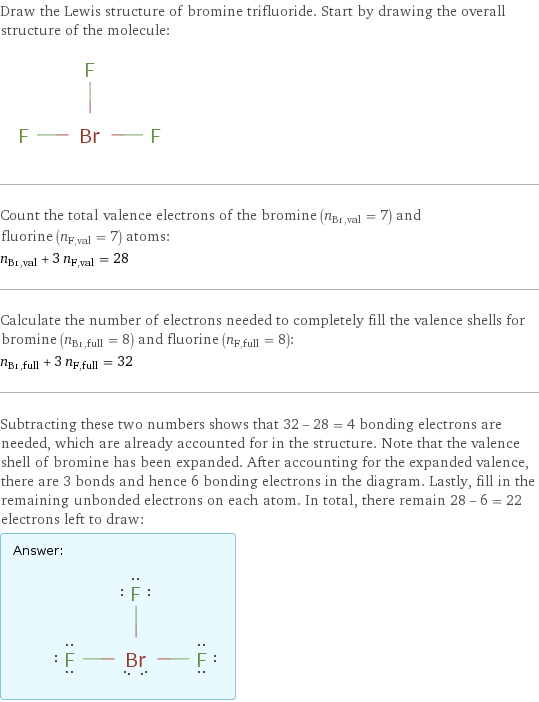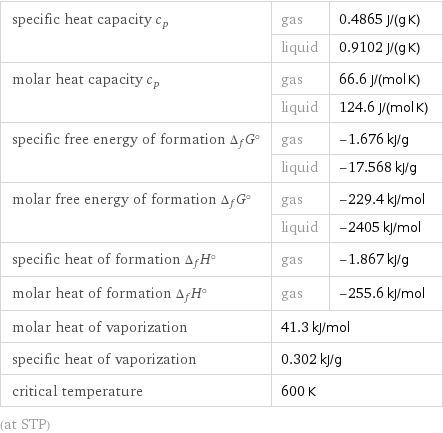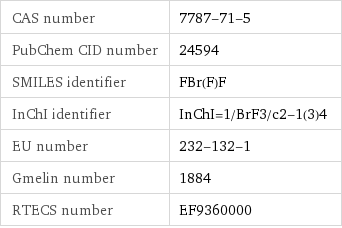Input interpretation

bromine trifluoride
Chemical names and formulas

formula | BrF_3 name | bromine trifluoride alternate names | bromine fluoride mass fractions | Br (bromine) 58.4% | F (fluorine) 41.6%
Lewis structure

Draw the Lewis structure of bromine trifluoride. Start by drawing the overall structure of the molecule: Count the total valence electrons of the bromine (n_Br, val = 7) and fluorine (n_F, val = 7) atoms: n_Br, val + 3 n_F, val = 28 Calculate the number of electrons needed to completely fill the valence shells for bromine (n_Br, full = 8) and fluorine (n_F, full = 8): n_Br, full + 3 n_F, full = 32 Subtracting these two numbers shows that 32 - 28 = 4 bonding electrons are needed, which are already accounted for in the structure. Note that the valence shell of bromine has been expanded. After accounting for the expanded valence, there are 3 bonds and hence 6 bonding electrons in the diagram. Lastly, fill in the remaining unbonded electrons on each atom. In total, there remain 28 - 6 = 22 electrons left to draw: Answer: | |
Basic properties

molar mass | 136.9 g/mol phase | liquid (at STP) melting point | 8.77 °C boiling point | 125.8 °C density | 2.803 g/cm^3 solubility in water | decomposes
Units

Liquid properties (at STP)

density | 2.803 g/cm^3 surface tension | 0.0363 N/m
Units

Thermodynamic properties

specific heat capacity c_p | gas | 0.4865 J/(g K) | liquid | 0.9102 J/(g K) molar heat capacity c_p | gas | 66.6 J/(mol K) | liquid | 124.6 J/(mol K) specific free energy of formation Δ_fG° | gas | -1.676 kJ/g | liquid | -17.568 kJ/g molar free energy of formation Δ_fG° | gas | -229.4 kJ/mol | liquid | -2405 kJ/mol specific heat of formation Δ_fH° | gas | -1.867 kJ/g molar heat of formation Δ_fH° | gas | -255.6 kJ/mol molar heat of vaporization | 41.3 kJ/mol | specific heat of vaporization | 0.302 kJ/g | critical temperature | 600 K | (at STP)
Chemical identifiers

CAS number | 7787-71-5 PubChem CID number | 24594 SMILES identifier | FBr(F)F InChI identifier | InChI=1/BrF3/c2-1(3)4 EU number | 232-132-1 Gmelin number | 1884 RTECS number | EF9360000
NFPA label

NFPA label

NFPA health rating | 4 NFPA fire rating | 0 NFPA reactivity rating | 3 NFPA hazards | oxidizing agent | water reactive
Toxicity properties

RTECS classes | other